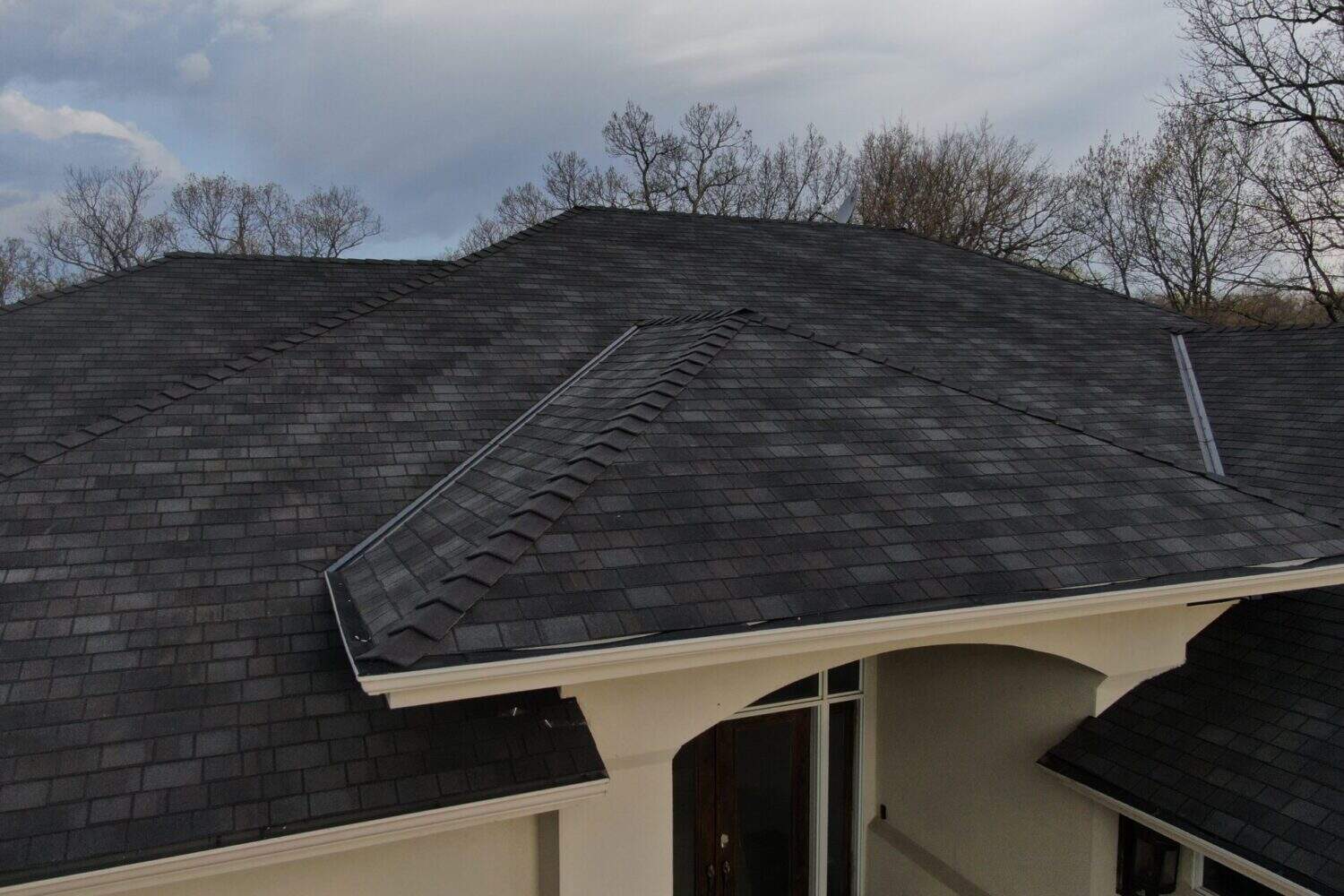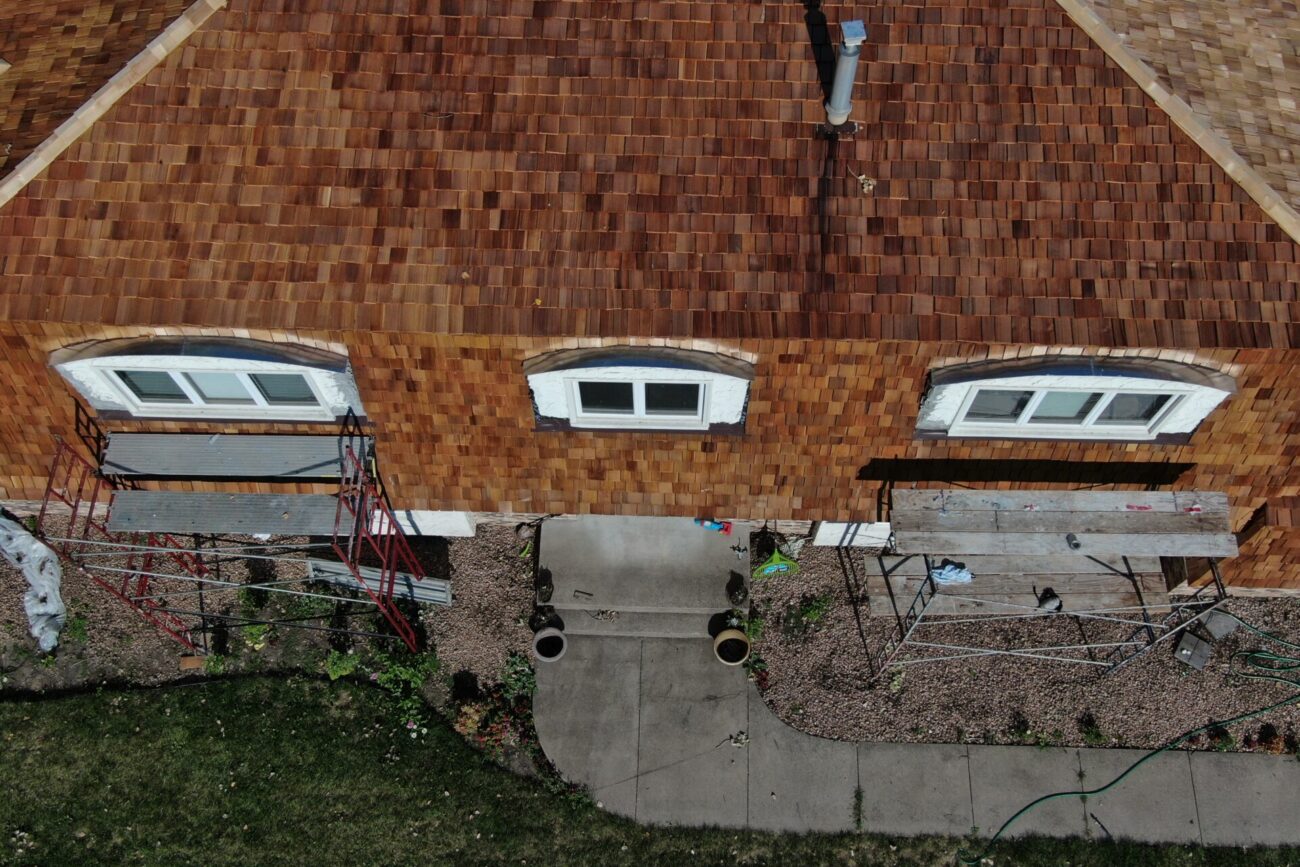When you need work done on your roof, you need to fix it—no matter what time of year. But many of us don’t think about the winter as a time for roof work. That’s seen as a summer job, first and foremost.
And it is true that most of the time, installing a new roof will happen in the warmer months. But summer, spring, or early fall are not the only times your roof can get damaged and are not the only seasons you can get roofing work done.
Roofing in winter is far more common than you might think. A roofing business doesn’t simply shut its doors in winter. They know that there are plenty of issues that can arise for homeowners when the temperature drops.
Heavy snow, ice dams, damaged shingles from high winds, and many other issues can arise during winter. The longer those problems go unaddressed, the worse they become. A small issue in December can necessitate a total roof replacement if no one takes care of it before April.
So what do you need to know about winter roofing? How does it differ from roof working in warm weather? Here’s what you need to know.
Can You Replace a Roof in Winter?
The short answer is yes, you can replace a roof in winter. But that’s only part of the story. As with any outdoor activity or occupation, winter weather complicates things. From lower temperatures to potential safety hazards unique to the season, roofing in winter comes with unique challenges that you and the crew you hire need to be aware of.
The first thing to be aware of is ice. No matter when you have roof work done, the crew will be up high. In winter, not only do crews need to take normal safety precautions due to the height at which they work, they need to be vigilant about how slippery the roof may be.
Anyone who has driven in cold weather knows that you don’t always see ice before you go over it. So in addition to safety harnesses, it’s important that a roofing crew moves more carefully on a cold roof.
While this means that your crew may move a little more slowly in winter than they would in summer, a group with members who are experienced in cold weather roofing techniques will know how to stay safe while working efficiently.
The second thing to keep in mind about roofing in winter is the way that cold weather can affect tools. Nail guns that operate using compressed air are some of the most important tools used in roofing and cold temperatures can really mess with them.
This is because there can be moisture buildup in the air hoses connecting the air compressor to the nail gun. When the weather is warm, this doesn’t matter. In cold weather, however, that moisture can freeze, impeding the flow of air.
This results in nails that do not go into the roof flush to the shingle. Which means that the nail isn’t going to properly secure the shingle. In order to ensure that the work is done properly, this just means that your crew will need to be more observant when doing a cold weather roof installation.
By paying attention to the depth of the nails from their nail guns and using a good, old fashioned hammer to ensure that every nail is put in place properly, your crew will still have your roof installed correctly—no matter the season.
What About the Shingles?
We’ve talked about how footing for your crew and how tools like nail guns can be affected by cold weather, but what about the shingles? What barriers do low temperatures put in place when installing asphalt shingles?
This is a very important question. The adhesive that is used on most shingles is designed to activate and bond when it hits certain temperatures. So if the weather is cold, that adhesive won’t do anything.
Additionally, shingles can get brittle in the cold. They are more likely to crack or break as you prepare them for installation and the risk of over-driven nails is higher. You simply cannot treat shingles the same in cold weather as you would when it is warm—you need to take extra care.
Luckily, there are ways around these concerns. When roofing in winter, you need to take extra care and be more deliberate and observant. Keeping a close eye on shingles to ensure that no damaged shingles get placed is exponentially more important in winter.
And when it comes to the adhesive problem, the key there is the use of caulking guns. By applying roofing cement with caulking guns, your crew will be able to keep your new shingles in place—minimizing blow offs—until the temperature on the roof gets high enough for the normal adhesive to activate.
That phrase, “until the temperature on the roof gets high enough,” is also important to remember. That’s because direct sunlight can result in a rooftop that is noticeably warmer than the surrounding air temperature.
So depending on the cloud cover, it is possible that your roof will be warm enough to activate your shingles’ adhesive, even when it is cold outside. To be safe, though, your crew should still apply roofing cement to each shingle they apply during cold weather.
Defining “Cold”
Thus far, we have made reference to “cold weather” pretty frequently, but how are we actually defining that?
In Minnesota, winter temperatures can vary wildly. One week, it will be significantly below zero, the next week, it will be near 50°. The latter is less frequent, but it does happen. When you are roofing in winter, you need to take those temperatures into account.
For most roofing materials, installation is not recommended when the temperature drops below 40 degrees Fahrenheit. Although some technological progress has been made to allow for safe installation in temperatures lower than 40° weather, most experienced crews will still warn against it.
All that this means is that you and the people you have hired for your new roof in winter will need to keep an eye on the forecast. And that’s something you would do in the summer, anyway. After all, an extremely windy day is not great for roof work, no matter the season.
As long as you monitor the weather, and double check the temperature on your roof if it is sunny, you shouldn’t have a problem.
Roofing in Winter is More Common than You May Think
There are many reasons you may need roof work done in the winter months. And while a crew needs to be more careful and more diligent when working in cold weather, getting that work done as soon as possible can be very necessary to prevent further problems.
Make sure you are working with an experienced company like Summit Construction Group. We understand what it takes to make roofing in winter safe, efficient, and affordable without sacrificing quality. Reach out to us to see how your winter roofing problems can be solved as soon as possible.


